As Abortion Restrictions Mount, Companies Work Behind the Scenes to Ensure Reproductive Rights for Their Employees
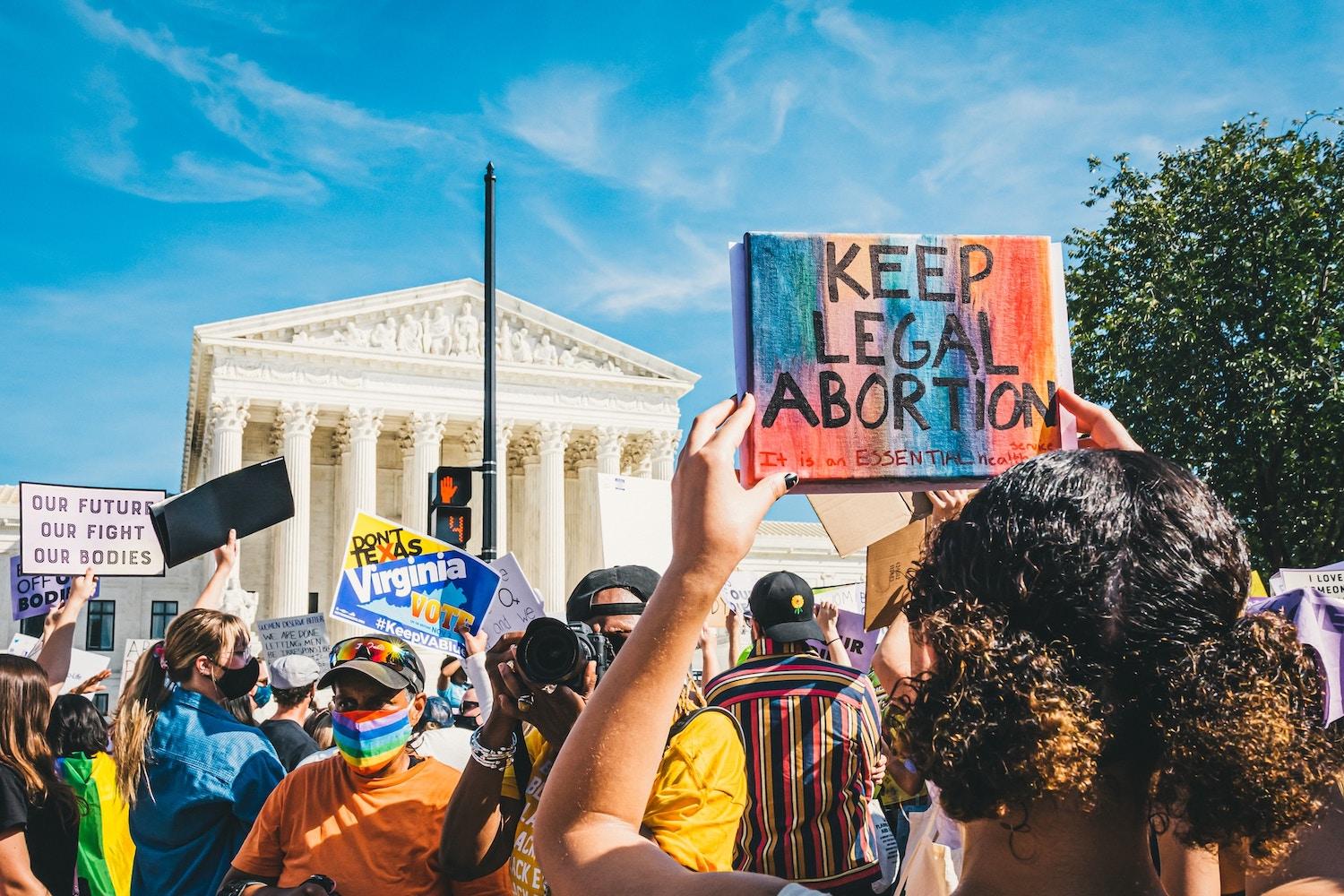

Demonstrators gather in Washington, D.C. to support reproductive rights in October 2021. (Image: Gayatri Malhotra/Unsplash)
It may be happening quietly behind the scenes rather than emblazoned in public statements, but hundreds of companies are showing their support for reproductive rights more than a year after the U.S. Supreme Court overturned Roe v Wade, ending the right to abortion.
One way in which companies are banding together on this issue is through the Don’t Ban Equality coalition, which has nearly 1,000 signatories ranging from small- and mid-sized firms to large household brands like Ben & Jerry’s, Dove and Levi Strauss & Co. The coalition’s position is that “restricting access to comprehensive reproductive care including abortion threatens the health, independence and economic stability of our workers and customers.”
Many of the companies signed on following the leaked draft of the Supreme Court ruling overturning Roe v. Wade in May 2022, with hundreds of signatures flooding in after the eventual decision a month later, said Jen Stark, co-director of the Center for Business and Social Justice, which is part of BSR, a sustainable business network and consultancy.
“The coalition has provided a space where companies can signal to their employees that they understand this is a larger workforce and economic issue and that they are on this journey to understand how to act and respond in the wake of all that is happening,” Stark said.
Recognizing abortion access as a business and economic issue
Reframing reproductive rights as an economic and workforce issue is crucial, Stark told us. “It is as much about economic justice, economic empowerment and economic access as anything else.”
The economic losses from existing abortion restrictions, including labor force impact and earnings, already cost U.S. states an estimated $105 billion annually, according to Don’t Ban Equality. The New York Times Dealbook is among the business publications to cover abortion as a workforce issue that should be on companies’ radars, Stark said. Meanwhile, investors filed at least 31 shareholder proposals addressing access to reproductive healthcare for 2023 proxy ballots.
The issue of reproductive rights also impacts hiring and retention of employees, who want to be assured that this aspect of healthcare will be part of their employee benefits, Stark added. In an April poll from BSR and Morning Consult, workers said they prefer to live in a state where abortion is legal and accessible than where it is illegal and inaccessible by a margin of 2:1.
“This underscores how reproductive rights are a workforce readiness and health and wellbeing issue.” Stark said.
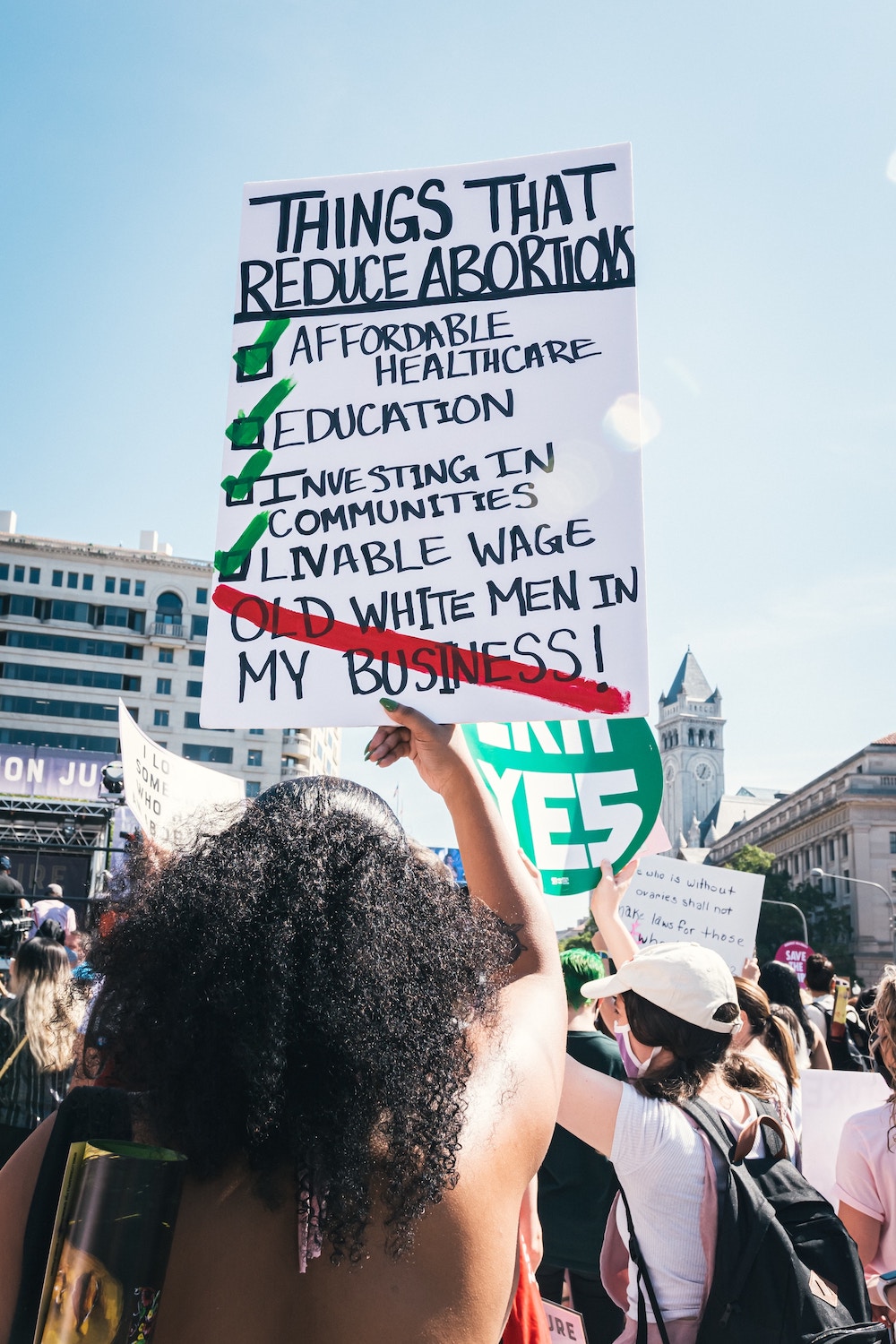
How companies are taking action
Some companies are vocal about how abortion restrictions impact their ability to maintain and grow a business in a given state, such as pharmaceutical manufacturer Eli Lilly and engine maker Cummins in the wake of a near-total abortion ban enacted in Indiana.
Others are working behind the scenes at the state level where bans are being enacted, Stark said. “They can throw needed sand in the gears to slow down the speed with which elected officials would like to enact these bans and restrictions. I think business voices even privately exerting influence on state-level abortion bans is very powerful.”
Yet many more companies are working quietly to address the impacts of abortion restrictions on their employees. “In these fraught times, we see that companies are most comfortable taking action within their own walls by enhancing or updating their benefits to meet the needs of their workers," Stark said. "They want to ensure their benefits are accessible and inclusive to the widest swath of their workforce.”
Why reproductive rights are human rights
Many in the U.S. don’t take into account that reproductive rights are human rights, said Paloma Muñoz Quick, associate director of human rights at BSR. This right was enshrined in an international treaty in 1979, called the Convention on the Elimination of All Forms of Discrimination Against Women. The U.S. is one of only seven countries — including Iran, Sudan, Somalia, Nauru, Palau and Tonga — that have not yet ratified the Convention.
But the fact that the U.S. is not a signatory should not matter to business, Muñoz Quick’s said. “The expectation for companies is that they respect internationally recognized human rights, irrespective of whether governments do their job to protect human rights, in this case, women's rights. The idea in this context is that companies continue to support and encourage and ensure that women who are pregnant have access to abortion, whether that’s employees or others who are connected to their business.”
By moving to protect reproductive rights, companies can be confident they're aligned with "an approach that has been agreed upon widely by governments all over the world," Muñoz Quick said. "The company’s stance is therefore a transparent, principles-based and thoughtful approach which provides the clearest path forward."
She pointed to this guidance to help business leaders better understand how to respect human rights, including reproductive rights, when domestic law does not uphold international standards.
Finding ways to respond amid pressure
What is certain is that contention around abortion won’t go away any time soon. The economic backlash is being increasingly felt. The 2023 CNBC rankings for America’s Top State for Business considered reproductive rights as a metric. That may have played a part in Texas, which has some of the country’s most restrictive abortion laws, falling out of the top five for the first time.
As of June, companies are also legally required to adhere to the federal Pregnant Workers Fairness Act which strengthens pregnant workers’ access to time off or job modifications, including time off to access abortion care.
Given the quickly evolving legal and societal landscape around abortion and reproductive rights, businesses need to consider carefully how they will respond, Stark said.
“At the heart of the discussion, we need to keep coming back to why this is a workforce and economic issue,” she said. “These are issues that are larger than any one company can solve for and requires system change and advocacy. At the end of the day, we need companies to seek to provide benefits to mitigate the harm.”
A Community Approach is Necessary to Address Child Labor in Cacao


Cacao beans are processed at a farm in Ivory Coast. (Image credit: Etty Fidele/Unsplash)
In the 1990s and early 2000s, the chocolate industry — which had grown immensely over the previous decades — faced an unprecedented challenge to its business and brand reputation.
Consumers were confronted by images of children as young as 5 working on cacao farms in Africa, resulting in huge reactions across the United States and Europe, the main chocolate consuming markets in the world. For parents, the idea that the treat they gave to children on Halloween might be produced by a child working in inhumane conditions on the other side of the world was unthinkable.
But the conditions that cause child labor in sectors like cacao are complex. “It’s small farmers who are not necessarily generating a lot of income from their cacao, compounded by a number of additional causes, such as lack of access to quality education [and] healthcare,” says Matthias Large, executive director of the nonprofit International Cocoa Initiative. “Then children may have to help on the farm.”
In the years that followed, it became clear this was not an isolated problem, but a widespread issue. Approximately 70 percent of cacao comes from just three countries: Indonesia in Southeast Asia and Ghana and Cote D’Ivoire in West Africa. In West Africa alone, an estimated 2 million children were working on smallholder cacao plantations in 2015.
“In the case of cacao, the vast majority of child laborers are kids who are helping out on the family farms, but are sometimes involved in hazardous activities,” Large says.
As the problem became more visible in the first decade of the 2000s, opaque sourcing — including a reliance on indirect suppliers — meant nearly no companies could say, with certainly, that their chocolate or cacao products were made without the use of child labor. The immense spotlight and attention forced brands to act, with many setting ambitious goals to eliminate child labor in their supply chains, including Hershey, Nestle and Mars.
However, as anyone working in a sustainable supply chain can tell, making a bold commitment is one thing. Actually investing in the resources to make a difference on the ground is another.
“Companies cannot wait for a journalist to come and say they found child labor in your supply chain. Of course there is child labor,” Large says. "You need to take a proactive approach and responsibly manage risk."
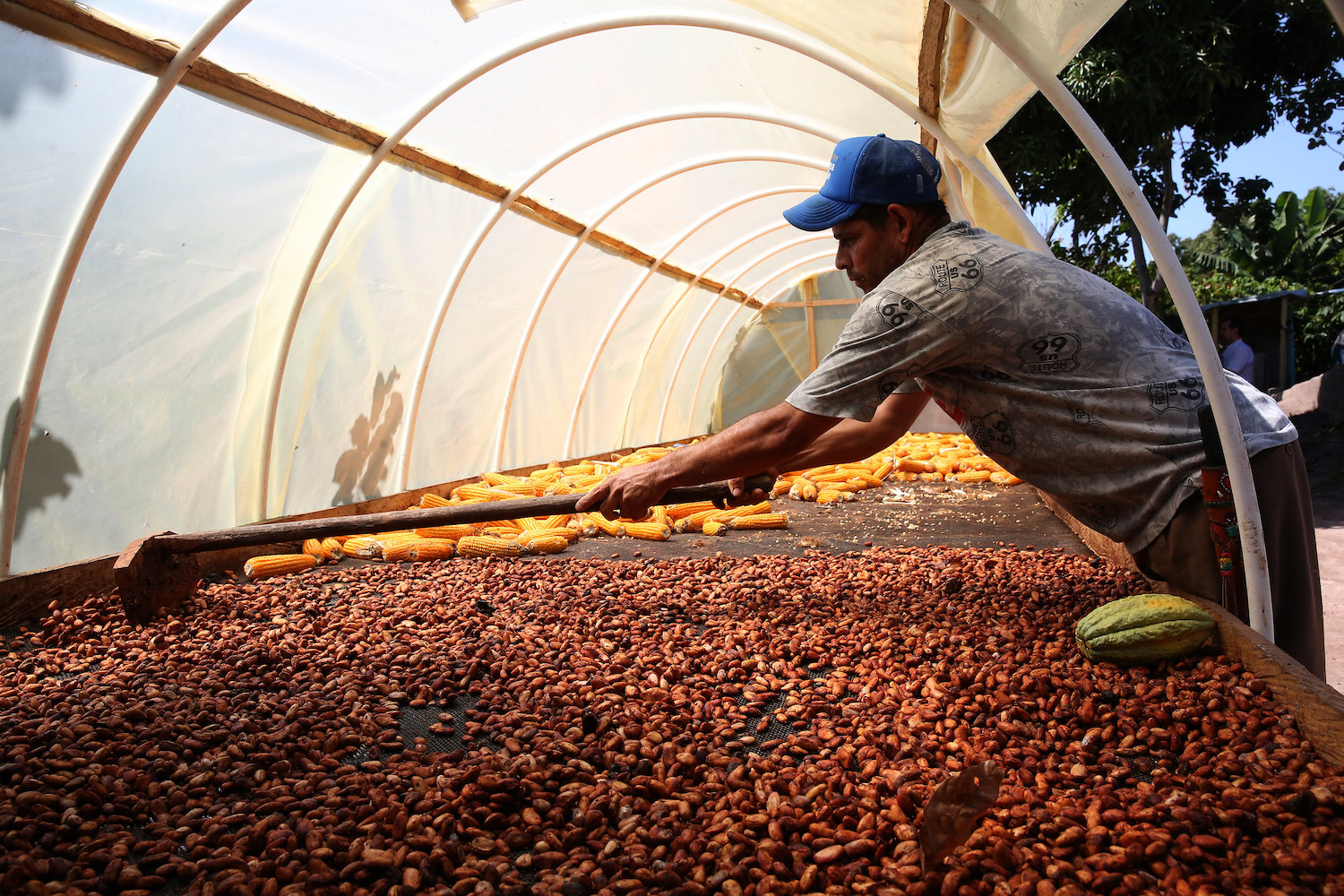
Community-centric approaches to address child labor in cacao
Cacao is primarily grown by smallholders, usually on farms less than five hectares in size. Middlemen gather this cacao from numerous farms, mix it all together, and sell it along complex supply chains. Eventually it reaches traders, three of which — Cargill, Olam and Barry Calleabaut — control about 60 percent of the cacao traded globally. Consumer-facing brands, the ones we buy chocolate from, are many steps away from the cacao farm.
“Consumer-facing brands are not on the ground, directly purchasing cacao,” Large says. “They need to train and support their suppliers and make sure they implement robust due diligence.”
One strategy is to work with nonprofits that are already on the ground and can help build relationships with cacao-growing communities. One with a long history in this space is Rikolto, a Belgium-based nonprofit that works on cacao sustainability around the world. Its model aims to empower communities by setting up and working with farmer’s associations, and helping brands partner with them.
The nonprofit is also looking at innovative ways to help farmers generate additional income, because it's often lack of livelihoods that forces children to work on farms. For example, one Rikolto project in Indonesia, in partnership with Mars, trains farmers to ferment cacao — a higher-value product used in more gourmet production.
“This improves the quality of income for the farmer and reduces the living income gap,” says Peni Agustijanto with Rikolto Indonesia.
Rikolto is also trying to help farmers get better income through the use of agroforestry and intercropping, training farmers on how to grow cacao beans alongside other fruits, spices or even wood crops, which can provide both income and sustenance for farmers.
“Before, agroforestry was not common,” Peni says. "Enabling this is not easy, and requires an active, hands-on approach, which can be labor intensive. It also requires local adaptation, because not every crop is suitable for a particular landscape, or has a local market. Every day, our team is going and assisting farmers [with] how they manage and maintain other crops in cacao farms."
Another nonprofit in this space is IDH, based in the Netherlands. It's focused on developing innovative approaches to help companies meet their sustainability and labor commitments through projects like the Cocoa and Forests Initiative. Like Rikolto, it takes a community approach and aims to diversify income and increase farmers' yields so they no longer have to rely on child labor on their farms.
This approach means treating farmers not as mere suppliers, but as equal partners, and providing the requisite support, says Fitrian Ardiansyah, IDH’s lead in Indonesia.
“Farmers need to be supported as if they are a business entity,” Fitrian says. “If farming continues to be done as it has, as business-as-usual, we can’t address livelihood challenges.”

The challenge of scale
The work of these groups has had a real impact, but unfortunately, not enough. Large estimates that 30 percent of global cacao is traceable to the point where brands and consumers can be certain there is no child labor involved. This is partly due to the work of groups like IDH, which estimates that its partnerships with Mars and Mondelēz International have helped 20,000 smallholders in Indonesia alone increase their incomes and access new markets
But there are an estimated 6 million cacao farms globally, meaning millions of children are still at risk. How can players in the sector scale up this work and make the entire supply chain sustainable?
IDH has an idea, one that goes even beyond cacao. Let’s stop talking about each individual supply chain and start looking at landscapes, the nonprofit suggests. That's because cacao is often grown in the same areas, and sometimes on the same farm, as other crops. Some of these crops, like palm oil, sugar and coffee, are also linked to deforestation or labor rights issues.
“Since four years, we changed our approach,” Fitrian says. “It doesn’t matter if you are growing cacao, coffee or palm oil, the challenges are quite similar: productivity, lack of knowledge, or access to finance and markets. So, we are now mostly focusing on landscapes, not commodities.”
This includes an innovative pilot project to certify entire landscapes as being sustainable and free of child labor. This approach allows farmers to link their work to promote agroforestry and crop diversification with brands seeking to not only source child-labor-free chocolate, but also deforestation-free palm oil or sustainably-grown coffee.
“We are developing and supporting diversification, not only one particular commodity,” Fitrian says. “With these new interventions, and good management, farmers can find options in diversification.”
Of course, central to this is the willingness of brands to not only pay for sustainably-sourced cacao, but also to invest in these projects and build the future of agriculture. Two decades after the furor about child labor in chocolate, we’ve made real progress in building models to empower farmers. Now, we need to scale those up and build a truly ethical, traceable cacao supply chain.
How the Healthcare Industry Can Confront the Climate Crisis Through its Supply Chain
As Earth’s temperatures continue to rise, it has become evident that protecting the planet will require global cooperation and direct action across every single industry. The healthcare industry is no exception. Indeed, the connection between environmental health and human health underscores the importance of the medical community’s role in reaching net zero carbon emissions.
The healthcare sector contributes an estimated 4.5 percent of global emissions. Some of these greenhouse gases are produced from healthcare facilities; others are the result of the industry’s supply chain of goods and services. Yet when it comes to climate change, the healthcare industry must go beyond focusing on treating the health conditions resulting from environmental degradation -- and increasingly, we’re seeing industry starting to shift toward helping to prevent those health conditions by addressing climate change itself.
Boston Scientific is among those medical technology companies working to reduce emissions. Our ambitious effort will involve reevaluating every aspect of business and making changes to support achieving net-zero emissions along the company’s entire value chain. This work represents a considerable challenge, and one whose time has come.
“Climate change will affect almost every human disease in some way,” says Dr. Kenneth Stein, chief medical officer. “For those of us in the healthcare industry, who are dedicated to improving health and patient outcomes, that’s a worrisome thought. But we can apply our considerable innovative skills toward becoming part of the solution.”
Fortunately, we have a couple of important factors working in our favor. They are ingredients which, I would suggest, every company needs to succeed in meeting its ESG goals: A thoughtful, realistic, and science-based sustainability plan in development, along with full-throated support for our initiative at every level of our organization.
Making the business case for sustainability in healthcare
Within the medtech sector, some sustainability changes involve tracing products back through the supply chain to reimagine the way those products are sourced, manufactured, packaged and shipped. Doing so is a significant undertaking – so much so, that if an organization doesn’t have a clear understanding that its sustainability goals are in line with a clear mission to improve health outcomes, it might shy away from the challenge.
Paudie O’Connor, senior vice president in charge of Boston Scientific global supply chain, points out that for that reason, it’s important to dispel myths that there is tension between the two goals. “There is no reason why we can't further healthcare to help decrease the plight of human suffering, and work to improve the environment at the same time,” he told me.
In fact, Boston Scientific was the first medical device company to commit to carbon neutrality within its manufacturing network, as well as to receive approval for its net zero target by the Science Based Targets initiative (SBTi), an international organization that provides clear guidance for reducing greenhouse gas emissions in line with the latest climate science.
Already, we’ve made progress toward carbon neutrality goals by shifting our electricity sources in the U.S. and Europe to 100% renewable electricity – contributing to 76% renewable electricity across our global manufacturing and key distribution sites – putting us on track for 100% renewable electricity worldwide by 2024 in our manufacturing and key distribution sites. All are important milestones on the path to achieving the company’s net zero emissions target across the entire value chain by 2050.
However, some sustainability goals are more complicated. For instance, physicians and patients need medical products that are sterile, safe and reliable – and those standards are highly regulated. Now, teams must consider the environmental footprint of products at every life cycle stage, from design, sourcing, production and distribution to waste disposal and recycling.
"We spend a great deal of time thinking about how we can structure our supply chain to support growth and environmental sustainability,” O'Connor says. “For example, thinking of ways to reduce packaging, digitize instructions for use, target sterilization practices and use strategic modes of distribution."
Shipping is a good example. Medical device manufacturers have long shipped products to their destinations by air as a matter of convenience and, importantly, speed, so that devices are always available for patients who require immediate intervention. “Our supply chain has a purpose statement: ‘delivering for patients,’” says O’Connor. “Getting high-quality products to patients when they need them.”
Rail and maritime transport are far more carbon-efficient than air transport, but take longer; for example, a product that takes four days to get from Costa Rica to Boston by air may take 14 days by boat and rail. Thus, in switching to moving products by land or sea to key distribution hubs, a company must carefully reexamine the timetables by which products are sent and adjust them accordingly. Mapping out such thoughtful, deliberate changes can result in meaningful carbon reduction, making the effort well worthwhile.
Tackling environmental challenges for better health
This is one of the biggest challenges that the global population has faced, let alone the healthcare industry. But by viewing environmental sustainability as a step toward improving human health, the goals of both the medical community and those of global supply chain teams can come together as one. I believe that such a holistic view is precisely the way to frame the important sustainability work ahead of the healthcare industry. Dr. Stein agrees: “To reduce healthcare disparities, we can't ignore how environmental and climate changes will affect health, especially for society's most vulnerable.”
There is so much more work to do to continue to advance our collective efforts to contribute to a healthier planet. Regulations are increasing and evolving. Customer expectations are evolving. Science is constantly evolving and changing the things that we can accomplish for our customers and patients. But the industry is making meaningful changes -- and by holding ourselves and each other accountable, we can accelerate progress and achieve more together.
This article series is sponsored by Boston Scientific and produced by the TriplePundit editorial team.
Image courtesy of Boston Scientific
Plastic Pollution is Plaguing Coral Reefs. What Can Be Done?


Almost all coral reefs, including very deep and remote reefs, are polluted with plastic waste, according to a new study published in the journal Nature. After surveying 84 reefs around the world at varying depths, a team of researchers found that plastic makes up 88 percent of the debris in coral reefs — and 73 percent of that plastic is fishing gear.
“The biggest thing we found is that there is more litter on deeper reefs,” said Lucy Woodall, co-author of the study and associate professor at the University of Exeter. “We have had good information for many years from lots of groups doing good work in shallow water coral reefs, but now that we extended operations into deeper waters, we can see the litter extends into deeper reefs.”
Surprising findings about the state of plastic in coral reefs
While the results are alarming, Woodall, who is also a marine conservation scientist at the ocean research nonprofit Nekton, insists the paper contains good news. “This is a positive story and one that enables us to think about what our future decisions might be," she said. "When there is protection afforded to marine areas, minimal litter items are found.”
The pollution that was found in protected areas was light plastic that floated into the area from far away. Ocean states face a disproportionate impact of litter entering their boundaries from other places and will need global support to address the pollution. “It’s like climate change,” Woodall said.“The biggest emitters aren’t the ones living with the everyday experiences of a warming planet.”
Some reefs close to human populations have higher levels of plastic pollution, but another hotspot for reef pollution was reefs just outside of marine protected areas, according to the study.
When it comes to these hotspots, “We know that we have an association, but we don’t know why,” Woodall said. “It could be from recreational uses because people like to swim in those areas. This could be people that are using resources and services that marine protected areas provide. Perhaps it is fishers looking for a spillover effect. We found that there is a correlation with areas that don’t have a robust, fully-connected infrastructure that allows for careful waste management.”
Understanding the data helps us create better solutions, Woodall said. For example, if more studies show high levels of reef pollution in areas just outside of marine protected areas, policymakers could use that knowledge to create additional boundaries around these areas to act as buffers. “If we know some of these details, it helps make decisions. We can find opportunities when things feel scary,” she said.
Understanding the solutions at hand
The solution to protecting coral reefs is not as simple as an ocean clean-up. While it might seem easy to pick up something from a beach or river mouth, cleaning up coral reefs is not only logistically challenging but can actually damage ecosystems.
“Clean-ups can be brilliant because they get communities engaged in their local environments and can provide educational components,” Woodall said. “However, it is flawed thinking that clean-ups will be successful by themselves. We need to turn off the tap and stop litter from coming into the oceans.”
Plastic pollution comes from sources on land and at sea. For pollution that comes from land, policymakers must take a holistic view of the challenges in order to provide opportunities for change, Woodall said. Plastic debris across the world looks different depending on the area, and solutions should take into account local circumstances and constraints.
“Think about potable water,” she said. “If you can provide clean fresh water to a location, then the community doesn't have to buy it. It is better for the plastic pollution problem, but it also gives the community a social and economic benefit. We should couple benefits and solutions together. Often, we can reduce plastic waste by doing something positive that communities will benefit from.”
Stemming the tide of plastic from boats
Waste that comes from ocean vessels is different. While the research team for this study did not test this theory, one hypothesis is that plastic waste generated from vessels in the ocean comes from two sources — waste that’s dropped over the side of boats while they are at sea and lost fishing gear.
There are already many regulations around the world that make it illegal to dump waste into the oceans, but it is still happening, possibly due to a lack of waste infrastructure on shore. “If there is no formal waste management in port, and you have to drop it by the side of the ocean anyway, there may not be the motivation there to not drop it directly into the ocean,” Woodall said.
Plastic pollution from fishing gear is a different scenario. “No fisher wants to discard their means of income on purpose. They need that for financial and food security,” Woodall said. Broken gear is often discarded at sea, likely because there are no waste facilities ashore, but fishing gear is also lost unintentionally. Fishing gear can get stuck on ragged coral reefs, for example, which is a big problem for marine life that gets entangled and stuck in lost nets and lines.
To address these problems, some countries have implemented programs in partnership with Fishing for Litter, which encourage fishers who accidentally bring up old gear in their nets to bring it back to shore and dispose of it. Additionally, with proper waste infrastructure in place, practices like labeling fishing gear could be enforced to ensure that fishers take responsibility for their equipment, Woodall added.
Local solutions for a global problem
Although the new study did not investigate every reef in the world, the data came from diverse locations and depths to help researchers understand global patterns. When it comes to solutions to the global plastic problem, “Solutions need to happen locally,” Woodall said.
“We must listen to our local communities and Indigenous communities and people whose heritage and culture are integrated into the places where they live, because they will often give important insight on how to make changes," she said. "We need to ask communities what they need to make change. Let’s ask the right questions and listen to the people with solutions.”
Image credits: Tomoe Steineck/Unsplash
Recycling Challenge Engages Customers and Reduces Waste in Asia
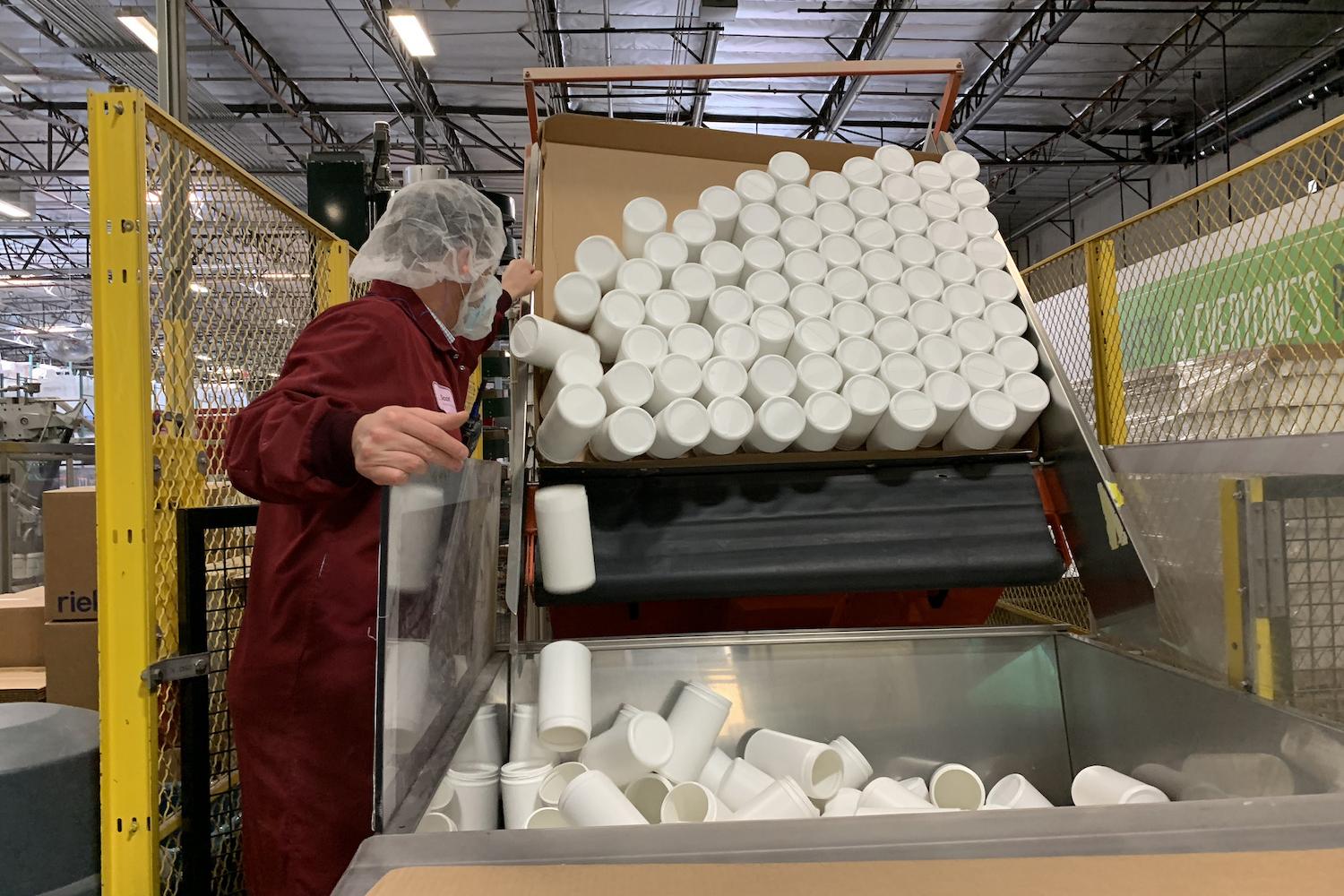
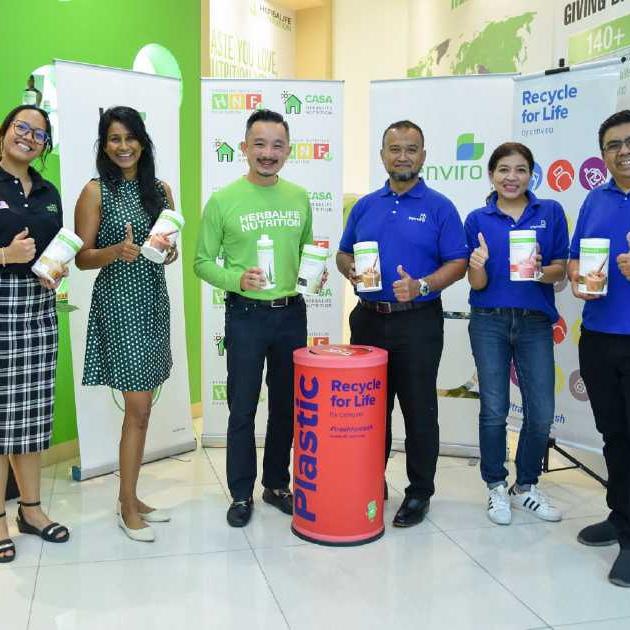
Empty canisters being processed for recycling.
As described in its recent Global Sustainability Report, Herbalife says it is committed to sustainable practices and priorities including sustainable packaging and minimizing plastic use. Global efforts to minimize the impact of product packaging include reducing materials, including recycled materials into product packaging, and engaging consumers to recycle more through awareness and education.
“One of Herbalife’s top priorities is moving toward more sustainable product packaging, focusing on reducing single-use plastics throughout our global distribution network, and incorporating more sustainable materials including using 25 percent post-consumer resin in our Formula 1 canisters globally in select markets,” said Stella Tsai, VP of Herbalife Nutrition North Asia.
The multi-nation Simply Recycle challenge is an example of this mission in action. The packaging take-back program engaged thousands of Herbalife independent distributors across the Asia Pacific region in 2022 and expanded into new markets this year.
A regional recycling initiative with local impact
Launched on World Environment Day 2022 and held from June to August of the same year, the Simply Recycle challenge was a big hit with customers. More than 3,300 Herbalife Nutrition members sent in over 712,000 product canisters, resulting in 36 metric tons of plastic for recycling during the program’s first summer.
Herbalife partnered with organizations in Vietnam, the Philippines, Malaysia, and Thailand to ensure the challenge spoke to the needs and expectations of local communities.
Some of these nation-specific nonprofit partnerships focused on converting product packaging into new manufacturing materials, for example, while others incentivized the collection of used product canisters from sales and distribution centers in order to reduce waste.
The company also linked up with One Tree Planted, a global nonprofit organization with a strong footprint in the Asia Pacific, to amplify the impact of the Simply Recycle challenge by planting one tree for every participant who submitted a certain number of used product canisters for recycling. The result was more than 1,400 trees planted, with the potential for 14 tons of carbon sequestration per year. The tree-planting partnership also proved to be a strong motivating factor in getting customers engaged with the challenge, Tsai said.

Engaging stakeholders for sustainability
Herbalife Nutrition also leverages the impact of stakeholder engagement and NGO partnerships to bolster its other Global Sustainability goals. For example, in addition to environmental initiatives, Herbalife and the Herbalife Nutrition Foundation have made significant strides in improving health and wellness like providing nutrition education and healthy meals in local communities in need.
Those efforts include HNF’s Casa Herbalife Program — which has engaged 178 organizations like hospitals, schools, and anti-hunger initiatives to provide food and nutrition to more than 229,000 children worldwide. Additional partnerships with the Global FoodBanking Network invests in the fight against food insecurity, reduce food waste and improve sustainability.
Consumer engagement as a force for lasting change
These nonprofit partnerships and efforts like the Simply Recycle challenge indicate that consumer engagement can — and should — be utilized as a long-term strategy for lasting change.
When launching the initiative, Herbalife Nutrition conducted a survey of 5,500 consumers in 11 Asia Pacific markets, the majority of whom revealed strong environmental proclivities. More than 75 percent of respondents recognized that environmental sustainability is important when making nutrition-related decisions. In particular, 76 percent feel it’s important to purchase products in recyclable packaging, and 90 percent said they’re more likely to engage with nutrition companies that offer recycling programs.
In addition to consumers, the Simply Recycle challenge also motivates the company’s network of distributors, Tsai said. “Our distributors support sustainability and appreciated the fact we had launched an innovative initiative to boost recycling,” she told us. “In addition to participating in the Simply Recycle challenge, our distributors also showed an aptitude for creative reuse by transforming empty product canisters into useful items, such as plant pots, money boxes and Christmas tree decorations.”
Going further in 2023
The Simply Recycle challenge kicked off again in April 2023 and runs through September across 14 markets in the Asia Pacific, including Cambodia, Hong Kong, Indonesia, Japan, Korea, Australia and New Zealand.
Herbalife Nutrition and One Tree Planted will plant one tree for every 50 product canisters recycled. And the top three recyclers will receive product vouchers to incentivize participation and friendly competition.
Engagement programs like Simply Recycle allow consumer companies like Herbalife Nutrition to extend sustainability efforts beyond their own four walls and inspire a sustainability mindset in their stakeholders.
The warm reception for the program among customers, distributors and partners in 2022 bodes well for even higher levels of participation in the future. “We anticipate an even more enthusiastic response this year, resulting in more trees planted,” Tsai said.
This article series is sponsored by Herbalife Nutrition and produced by the TriplePundit editorial team.
Images courtesy of Herbalife Nutrition
It Takes a Village: Northwestern Mutual’s Case for Community Revitalization
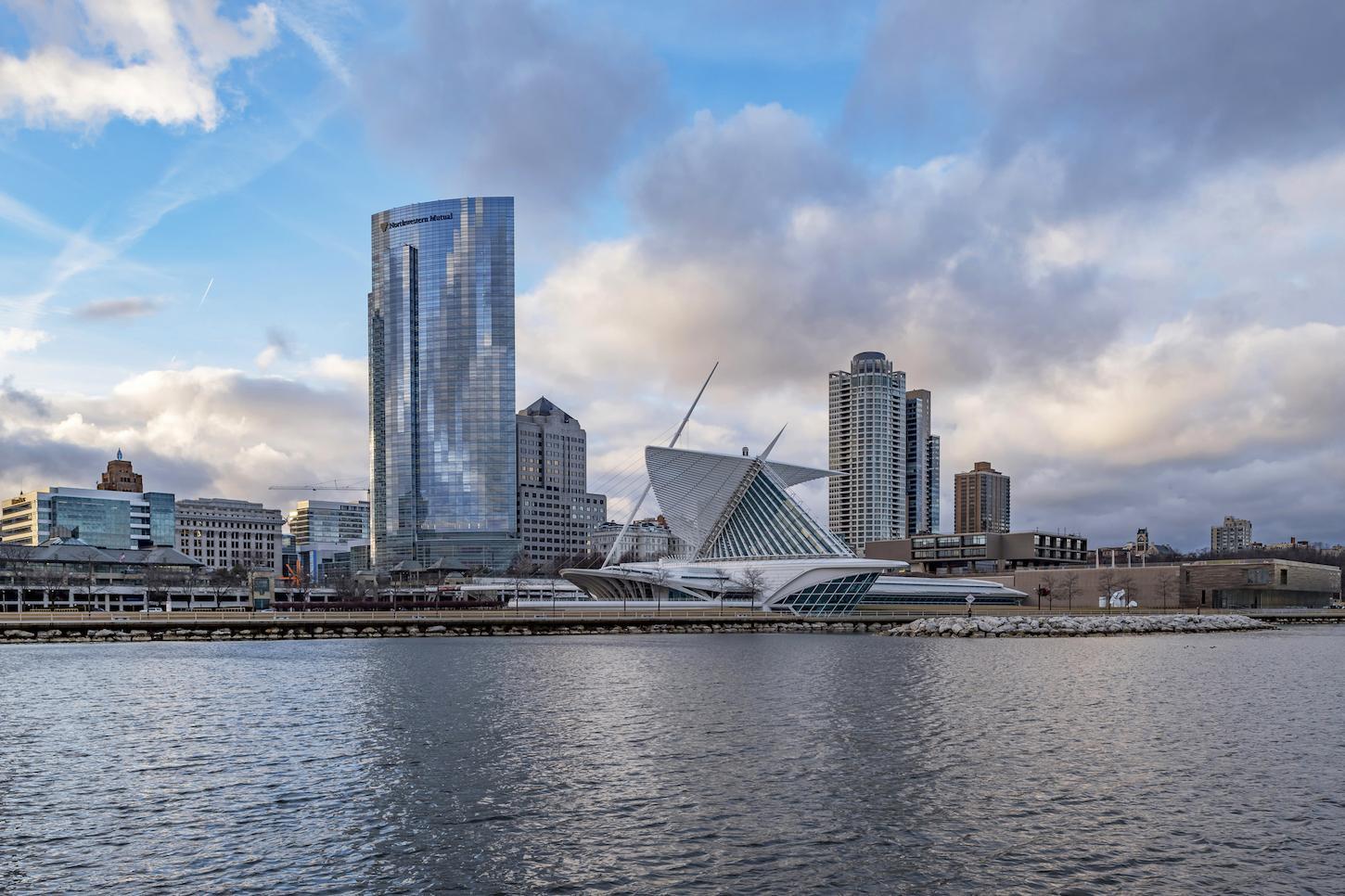
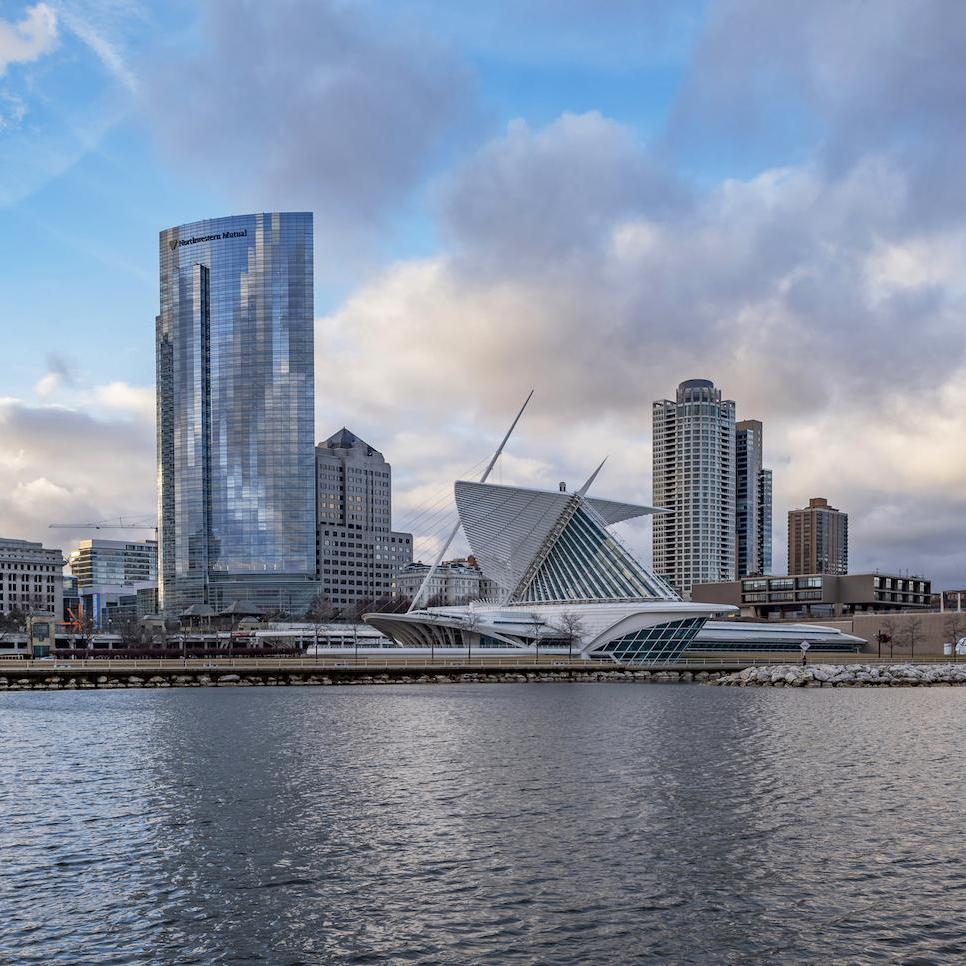
Northwestern Mutual has invested $3 million in local housing nonprofits to support Milwaukee’s underserved communities with the resources and tools to achieve financial stability through homeownership.
Ways of doing business are shifting from a narrowed focus on solely revenue, to a broader vision focused on a company’s purpose to serve all stakeholders, including employees, customers, communities and the environment.
“There's greater stakeholder interest in what’s going on. External stakeholders are asking more questions, wanting to know and have more visibility on the disparate activities that your company is involved in,” said Grady Crosby, vice president and chief sustainability and impact officer at leading financial services company Northwestern Mutual. “There's also been a regulatory push for more information on how non-financial factors can impact your business — from the standpoint of the recent pandemic, your ability to attract and retain talent, and your impact in the local community, for example.”
In its 166-year legacy, Northwestern Mutual’s purpose has been centered on helping people and businesses achieve economic success while committing over $400 million to community investments since 1992. These impact investments include fighting childhood cancer, improving education, and investing in the community revitalization of Milwaukee, Wisconsin, where the company is headquartered.
Since 2013, Northwestern Mutual has invested over $15 million to foster safe neighborhoods and support the growth and well-being of Milwaukee residents. “To close racial and economic disparities in our communities, we work directly with residents to advance their objectives,” Crosby said. “Just in the last year we built on our neighborhood revitalization efforts, offering $1.7 million in grants to nearly 30 nonprofit organizations in Milwaukee’s Amani, Metcalfe Park and Muskego Way neighborhoods.”
Investing in your ‘own backyard’ for long-term sustainability
Investing in local communities with solutions to address the racial wealth gap and other challenges can help restore economic optimism, which continues to be low.
“We have some great initiatives in progress. One is focused on increasing the stock of affordable housing,” Crosby said. “Having access to affordable housing is an economic tool to help people relieve their financial anxiety and bridge the racial wealth gap that we know exists in the U.S.”
To close the gap in their hometown of Milwaukee — where Black homeownership rate is trailing behind other cities — Northwestern Mutual announced a $3 million investment to local housing nonprofits to support Milwaukee’s underserved communities with the resources and tools to achieve financial stability through homeownership.
“The neighborhoods we work in are some of the most economically disadvantaged in Milwaukee,” Crosby said. “So, when we help build a perpetual stock of affordable housing, it goes toward community building, because people who own their home with pride are more likely to take care of themselves and their communities. Owning a home is one of the biggest investments an individual will make, and it’s also that home that allows them to start thinking about the transfer of wealth.”
A shift toward social value proposition
One of the top 10 findings in the 2023 Edelman Trust Barometer, which surveyed more than 32,000 people across 28 countries, is that people want businesses to do more, not less, to address issues like climate change, economic inequality and workforce re-skilling. 77 percent said they expect CEOs to take a public stand on the wealth gap, and 79 percent said it is a CEO’s obligation to ensure their home community is both safe and thriving.
“We have a strong social value proposition as part of our core business mission which revolves around relieving Americans from financial anxiety,” Crosby said. “To be able to deliver on this, it requires us to put people first and understand their needs. Since serving the communities we impact is at the core of who we are, it only makes sense that when we talk about impact, it starts with community development and neighborhood revitalization.”
Community involvement is a powerful strategy for organizations looking to drive growth and establish trust. By investing time and money in the community, businesses can help address their problems and spur sustainable economic growth.
In 2022, Northwestern Mutual more formally defined its environmental, social and impact (ESI) strategy with accountability at the core. "This strategy builds upon the values that Northwestern Mutual has embraced since its inception,” Crosby said.
Crosby echoes the importance of forward thinking, reminding peers that it takes a marathon, not a sprint to achieve sustainable impact in your communities. “Companies need to roll up their sleeves, be a part of the solution and commit to the journey [because] it’s one that never stops.”
This article series is sponsored by Northwestern Mutual and produced by the TriplePundit editorial team.
Image courtesy of Northwestern Mutual